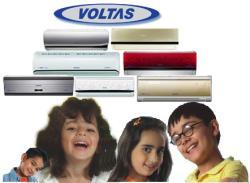 | « Back to article | Print this article |
In 2011, Voltas became a market leader in room air conditioners, which is the fastest growing segment in ACs and worth Rs 6,000 crore (Rs 60 billion) in terms of primary sales. A year later, the Tata brand became the number one player in terms of secondary sales as well, with a market share of 18.3 per cent (Nielsen data).
A year later, the Tata brand became the number one player in terms of secondary sales as well, with a market share of 18.3 per cent (Nielsen data).
This improved further to 20.3 per cent in the September 2012 quarter, widening the gap with the second largest player, LG.
This comes after 12 consecutive years of losses, followed by a total turnaround, and then five years of competing against fierce multi-national competition.
That's quite a distance for a company which had been losing market share and had dropped to the seventh position between 1993 and 2001 after multinationals such as Carrier, Hitachi, Whirlpool, Samsung and LG entered the Indian consumer durables market and launched a price war.
As a result, the unitary cooling business (ACs form part of this business) started incurring heavy losses.
For Pradeep Bakshi, now executive vice-president of the UCP division, all that is distant memory. "We obviously know India and the Indian psyche better than anybody else as far as AC is concerned," Bakshi says.
He has a point. For, till 2005, Voltas was largely present only in the institutional business (room ACs sold to private and government offices) and neglected the retail and household business.
Bakshi says Voltas has been proactive in changing its communication strategy as well. For example, it recently shifted from its earlier positioning of 'Sensible Cooling' to 'All Weather AC's'.
The latest positioning is a move to go beyond the conventional 'cooling' route followed by other brands and focus on the concept of climate control with a strategy to de-seasonalise the brand.
Voltas was the first to introduce energy-labelled products even before the government made it mandatory and looked at educating customers on the efficient usage of the brands' products.
This was after research revealed that sales growth was inversely proportional to the cost of AC usage. It then expanded its retail presence from a small base of 1,000 touch points to 6,000-plus in the past five years that helped it enter tier-II and -III